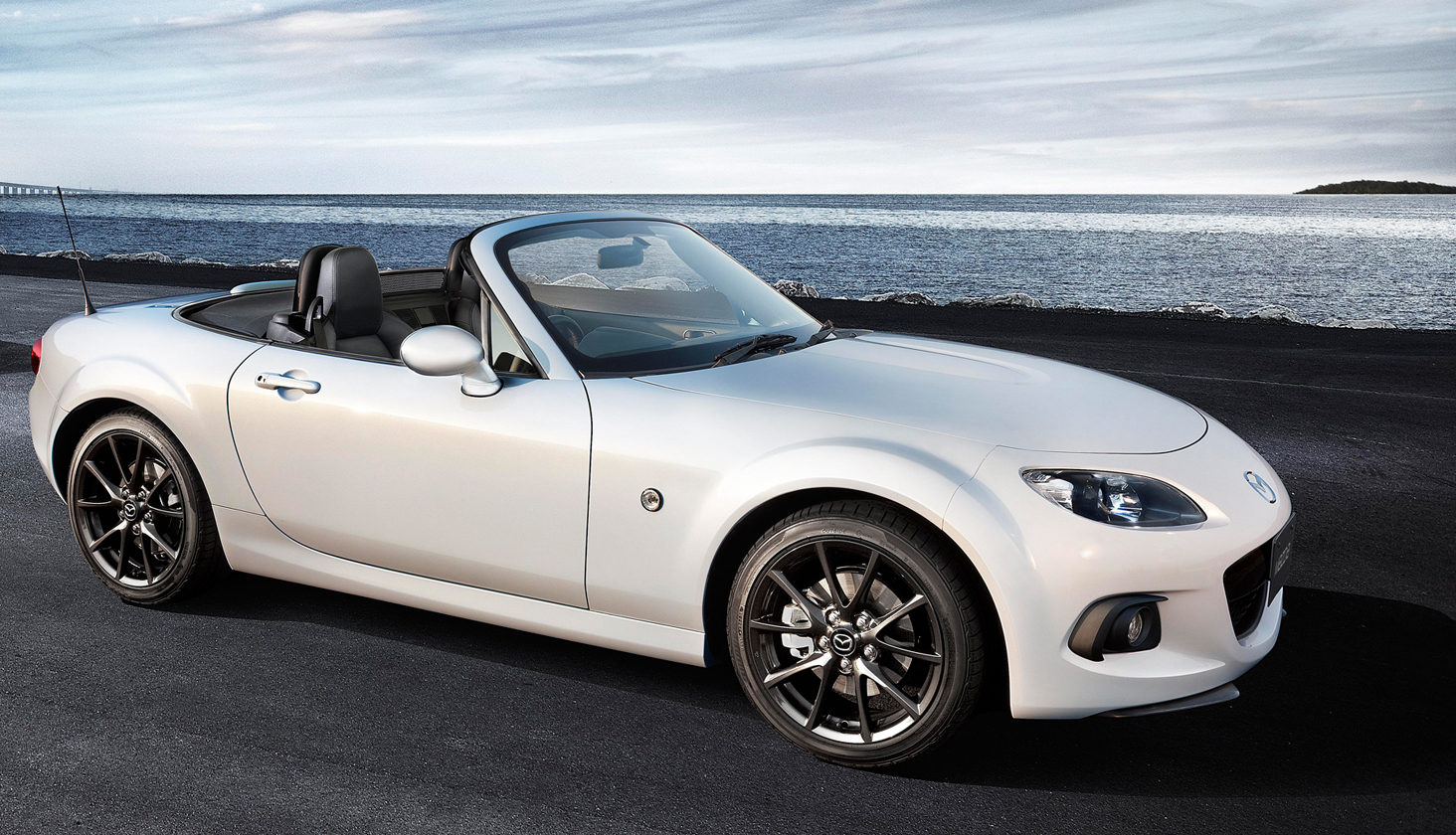Cars and Drivers
Auto Fuel Economy and Emissions Improvement Led by Mazda, Honda, and Subaru
Published:
Last Updated:

Fuel economy increased by 0.5 miles per gallon (mpg) in 2013 compared with 2012 for a total fleet average of 24.1 mpg, the highest fuel economy level ever. Carbon dioxide emissions fell by 7 grams per mile to a total of 369 grams per mile, an all-time record low for carbon emissions.
The highest adjusted (as defined by the EPA) fuel economy rating among automakers was achieved by Mazda, with model year 2013 rating on all its cars and trucks of 28.1 miles per gallon. Honda Motor Co. Ltd. (NYSE: HMC) ranked second with an fleetwide rating of 27.4 mpg, followed by Subaru with 26.7 mpg, Nissan with 26.2 mpg, and Volkswagen with 25.7 mpg.
Rounding out the top 11 were Toyota Motor Corp. (NYSE: TM) at 25.1 mpg (down 0.5 mpg from the previous year), BMW at 24.5 mpg, Daimler Benz at 22.4 mpg, Ford Motor Co. (NYSE: F) at 22.2 mpg (down 0.6 mpg year-over-year), General Motors Co. (NYSE: GM) at 22 mpg, and Chrysler-Fiat at 20.9 mpg.
Preliminary data for model year 2014 vehicles indicates a gain of just 0.1 mpg in overall fuel economy. The small gain might be due to a change in the production schedule at one manufacturer, but the EPA advises patience until next year’s report is published.
Pickup truck and SUV sales at all three U.S. automakers drag down their overall fleet ratings. The light truck share of the market has fallen from a peak of 48% of production share in model year 2004 to 37% in model year 2013. The EPA projection for model year 2014 is for an increase in light truck production to 39%, and although the agency does not say so, that is almost certainly due to demand for pickups, larger SUVs, and minivans.
Ford cars, for example, average 28.4 mpg, while Ford trucks managed just 17.5 mpg. GM’s cars posted a fuel economy rating of 25.9 mpg while GM pickups could manage just 17.3 mpg. Chrysler’s Dodge Ram pickups posted just 16.5 mpg.
In carbon dioxide emissions, automakers as a group performed just slightly better than the 2012 average of 376 grams per mile. Among the U.S. automakers, Ford vehicles emitted 400 grams per mile while GM vehicles came in at 404 grams per mile and Chrysler was worst of all makers at 425 grams per mile. Chrysler made the biggest year-over-year improvement, however; GM improved by 6 grams per mile; and Ford got worse, adding 10 grams per mile of carbon dioxide emissions.
Alternative fuel vehicles are also on fuel economy in mile per gallon equivalent (mpge) and carbon dioxide emissions. All electric vehicles like the Nissan Leaf or the Model S from Tesla Motors Inc. (NASDAQ: TSLA) emit no tailpipe carbon dioxide, while a Toyota Prius plug-in hybrid spits out 133 grams per mile and the Ford C-MAX and Fusion models emit 129 grams per mile.
The mileage ratings are based on converting electricity consumption data into an equivalent amount of energy as contained in a gallon of gasoline. For a Tesla Model S with the 85kW-hr battery pack that works out to 89 mpge. The highest rated vehicle is the BMW i3 at 124 mpge.
ALSO READ: Average Fuel Economy of Cars Drops Sharply
After two decades of reviewing financial products I haven’t seen anything like this. Credit card companies are at war, handing out free rewards and benefits to win the best customers.
A good cash back card can be worth thousands of dollars a year in free money, not to mention other perks like travel, insurance, and access to fancy lounges.
Our top pick today pays up to 5% cash back, a $200 bonus on top, and $0 annual fee. Click here to apply before they stop offering rewards this generous.
Flywheel Publishing has partnered with CardRatings for our coverage of credit card products. Flywheel Publishing and CardRatings may receive a commission from card issuers.
Thank you for reading! Have some feedback for us?
Contact the 24/7 Wall St. editorial team.